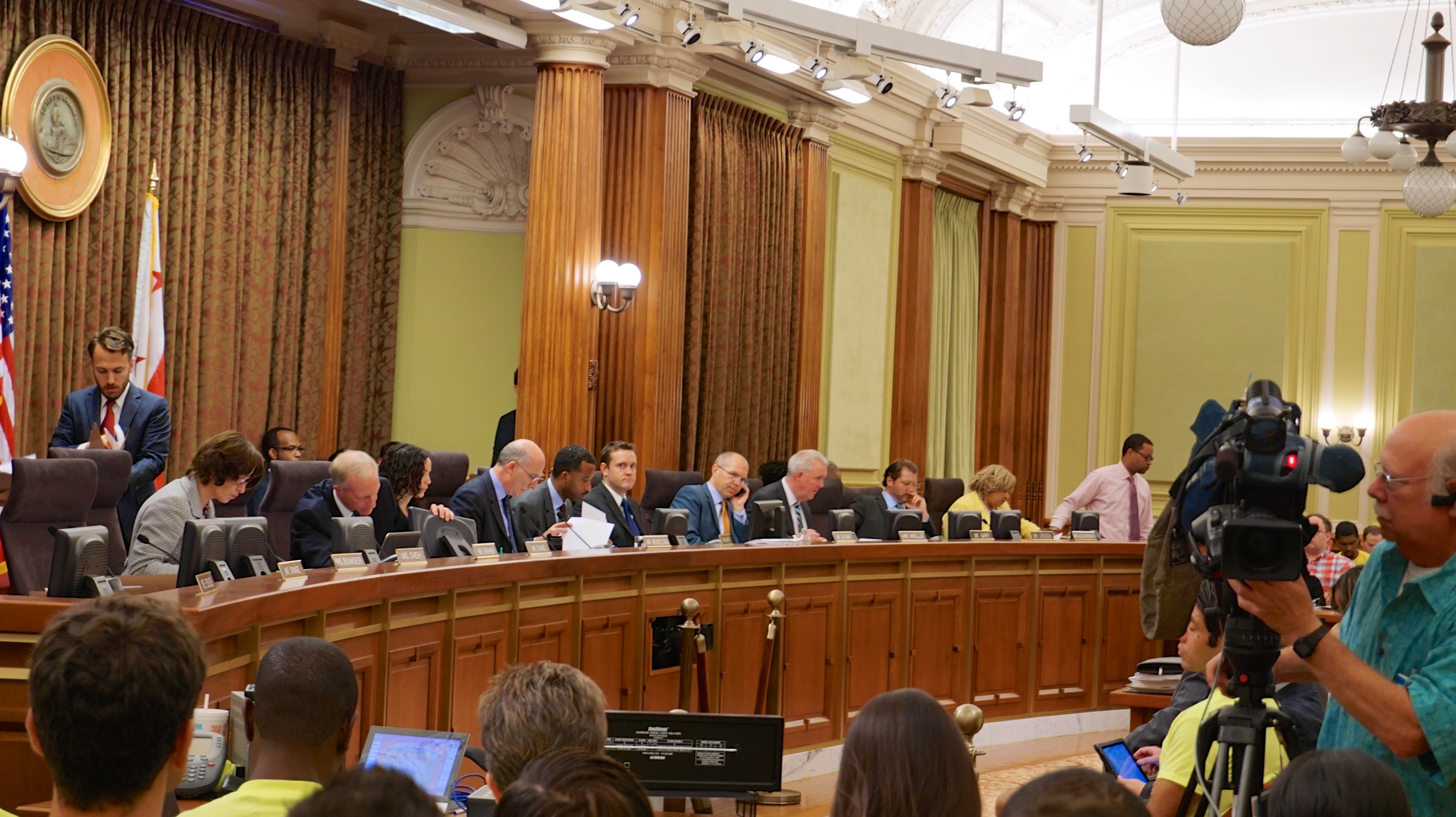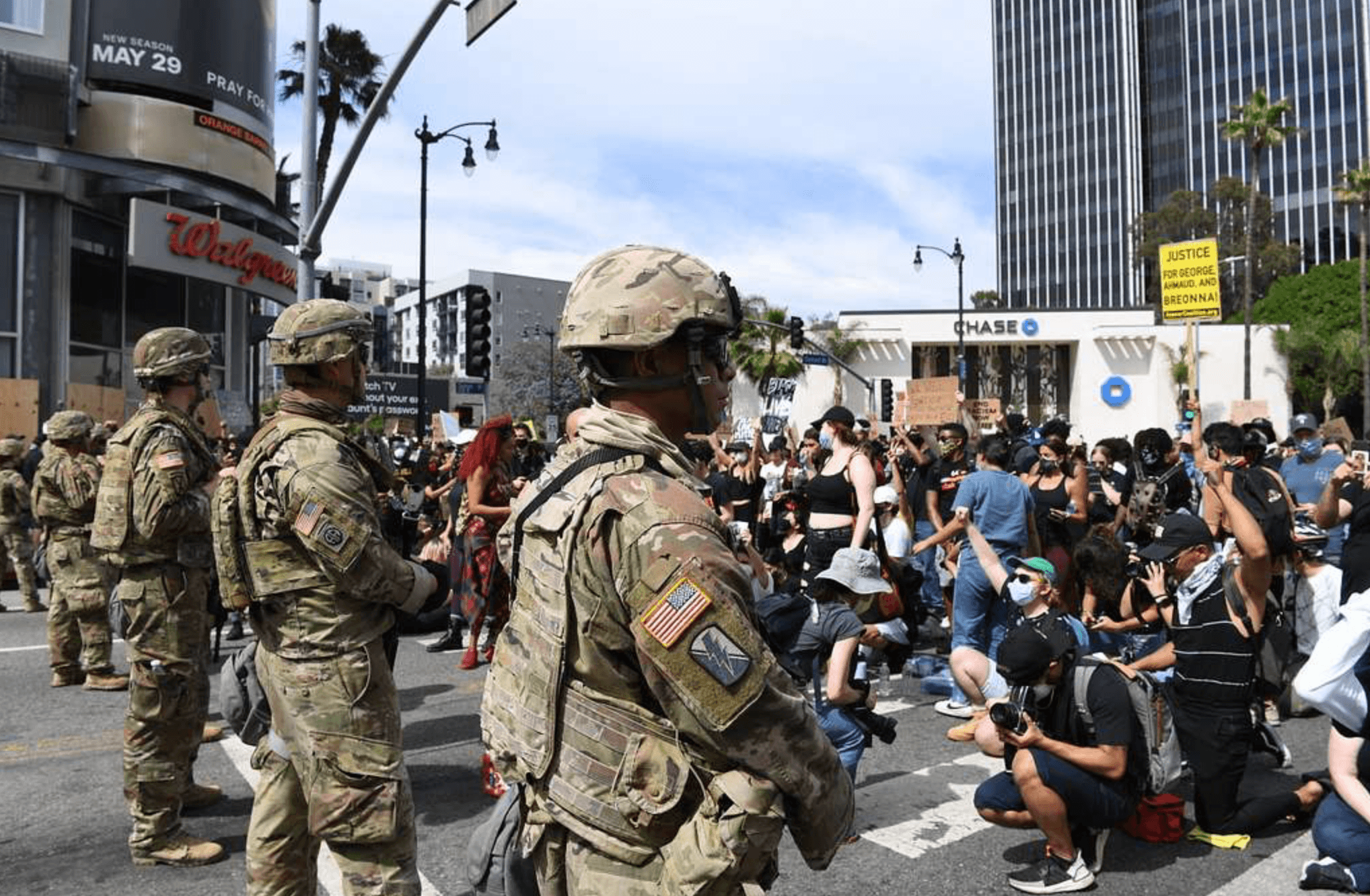The Situation: Then the Law Is an Ass
A municipal law the D.C. Council should consider amending

Published by The Lawfare Institute
in Cooperation With

The Situation on Saturday described my run-in with federal law enforcement officers outside the Russian Embassy the previous day, officers who had a sudden zeal to make sure I didn’t draw with chalk on the sidewalk.
The United States Secret Service officers in question—as readers of that column will recall—informed me that drawing a Ukrainian flag on the public sidewalk would violate a D.C. municipal law against defacing public property.
This position was, shall we say, a change in the enforcement posture of the Secret Service, who had watched me engage in precisely this same activity on at least two occasions before—one time even okaying it in advance.
In my Saturday column, I wrote, “I intend to explore my legal options with respect to this matter. Color me skeptical that a municipal ordinance ... that forbids [defacement] can reasonably and constitutionally be read to preclude hopscotch, public art, or peaceful protests with chalk on city sidewalks.”
I spoke hastily, as it turns out—at least if you ask the D.C. Circuit Court of Appeals, which in 2011 ruled in a case that raised the precise issue my incident on Friday would present.
A unanimous, if quite conservative, panel ruled that it was perfectly okay for the D.C. Council to ban defacing public property and for the police to interpret that ban as including very temporary chalk art.
The case in question concerned a group of anti-abortion activists who wanted to chalk the sidewalk in front of the White House—which is presumably similar constitutionally to the sidewalk in front of the Russian embassy. The D.C. Circuit summarized the case tersely as follows:
Section 22–3312.01 of the District of Columbia Code prohibits the defacement of public and private property. Appellants, Rev. Patrick Mahoney, Kaitlin Clare Martinez, the Christian Defense Coalition, Cradles of Love, Inc., and Cheryl Conrad (collectively, “Mahoney”) claim that prohibition, both on its face and as applied, violates their First Amendment right to chalk the 1600 block of Pennsylvania Avenue (literally, the street in front of the White House). The district court concluded otherwise. We now affirm.
The court’s reasoning ran as follows:
First, the Defacement Statute is indisputably content neutral. It prohibits certain conduct (i.e. disfiguring, cutting, chipping, defacing or defiling), including certain expressive conduct (i.e. writing, marking, drawing, or painting), without reference to the message the speaker wishes to convey. D.C. Code § 22–3312.01. Nor is there any evidence in the record the District adopted the Defacement Statute “because of [agreement or] disagreement with the message” a speaker may convey. ...
Second, the District's interest in controlling the esthetic appearance of the street in front of the White House is substantial. In City Council of Los Angeles v. Taxpayers for Vincent, the Supreme Court upheld a Los Angeles ordinance regulating the posting of signs on public light posts. ... In so doing, the Court stated that “municipalities have a weighty, essentially esthetic interest in proscribing intrusive and unpleasant formats for expression.” ... This is especially true here, where the special nature of the forum serves to heighten esthetic concerns. ...
The Defacement Statute is also sufficiently tailored to serve the District's esthetic interest. It is the tangible medium—chalking—that creates the very problem the Defacement Statute seeks to remedy. The same was true in Taxpayers for Vincent, where the Court noted “the substantive evil—visual blight—is not merely a possible by-product of [posting signs], but is created by the medium of expression itself.” ... Undoubtedly, the Defacement Statute encompasses some expressive activity. But “when ‘speech’ and ‘nonspeech’ elements are combined in the same course of conduct, a sufficiently important governmental interest in regulating the nonspeech element can justify incidental limitations on First Amendment freedoms.” ... It is true, the defacement at issue is temporary and can be cured. But the same was true in Taxpayers for Vincent. The government can proscribe even temporary blight. ...
Finally, the District's threatened use of the Defacement Statute leaves Mahoney with alternative channels of communication. ... The District granted Mahoney approval to conduct an assembly in front of the White House, for which he was “permitted to possess signs and banners.” Mahoney argues this was inadequate because “the only thing [he] couldn't do was the only thing [he] asked to do.” ... But the scope of Mahoney's request cannot define the available “channels of communication.” If Mahoney exclusively asked to post signs on light posts, he could not do so under Taxpayers for Vincent . ... And if Mahoney asked to litter, he could not do so under Schneider v. State.... Mahoney initially requested permission to conduct a “demonstration” consisting of “a variety of verbal and visual messages.” The District's threatened use of the Defacement Statute did not curtail Mahoney's plans. Mahoney was free to announce any “verbal” message he chose. And, Mahoney could depict visual messages on signs, banners, and leaflets. Thus, ample alternative channels of communication existed.
In sum, the Defacement Statute is content neutral, and substantially justified by the District’s esthetic interest in combating the very problem Mahoney’s proposed chalking entails—the defacement of public property. Because the District did not curtail Mahoney's means of expression altogether, and allowed him to protest in front of the White House in other ways, the Defacement Statute is not unconstitutional as applied.
A concurrence by then-Judge Brett Kavanaugh put the matter more bluntly:
No one has a First Amendment right to deface government property. No one has a First Amendment right, for example, to spray-paint the Washington Monument or smash the windows of a police car. As Justice Rehnquist succinctly said: “One who burns down the factory of a company whose products he dislikes can expect his First Amendment defense to a consequent arson prosecution to be given short shrift by the courts․ The same fate would doubtless await the First Amendment claim of one prosecuted for destruction of government property after he defaced a speed limit sign in order to protest the stated speed limit.” ... When, as here, the Government applies a restriction on defacement in a content-neutral and viewpoint-neutral fashion, there can be no serious First Amendment objection.
Now I could argue that this decision is wrong, but I actually haven’t studied the question carefully. Nor have I researched the question of whether any other court of appeals has considered the matter of sidewalk chalk, and whether a conflict in the circuits might thus exist, such that I might get this decision reviewed by a higher authority. The constitutional question here seems to me not profoundly important.
My concern, to be perfectly honest, is more prosaic: A law that prevents me from chalking a Ukrainian flag on the street is a really dumb law. Which is to say that whether or not the First Amendment protects my right or Rev. Mahoney’s right or a kindergarten class’s right to draw on the sidewalk with chalk, the law shouldn’t prohibit it. It shouldn’t prohibit it for hopscotch courses or rainbows or butterflies. It shouldn’t prohibit it for anti-abortion protesters near the White House. And it shouldn’t prohibit it for me in front of the Russian Embassy.
In other words, if the court really understands the law as having no exception for the most transitory and expressive defacements of sidewalks—and if it really understands the First Amendment as posing no obstacle to enforcing that interpretation—then the law is an ass and should be changed.
A mere glance at the D.C. Code section in question shows that chalking the sidewalk was not the legislative concern behind the provision. The provision reads:
It shall be unlawful for any person or persons willfully and wantonly to disfigure, cut, chip, or cover, rub with, or otherwise place filth or excrement of any kind; to write, mark, or print obscene or indecent figures representing obscene or objects upon; to write, mark, draw, or paint, without the consent of the owner or proprietor thereof, or, in the case of public property, of the person having charge, custody, or control thereof, any word, sign, or figure upon:
(1) Any property, public or private, building, statue, monument, office, public passenger vehicle, mass transit equipment or facility, dwelling or structure of any kind including those in the course of erection; or
(2) The doors, windows, steps, railing, fencing, balconies, balustrades, stairs, porches, halls, walls, sides of any enclosure thereof, or any movable property.
While the language’s clear concern is with vandalism, it doesn’t contain any exception for chalk or other harmless, nonpermanent markings. And its language is broad enough to include temporary writing not on buildings or monuments but on streets or sidewalks. Stripping out the superfluous language, the ordinance reads: “It shall be unlawful for any person or persons willfully and wantonly … to write [or] mark ... without the consent ... in the case of public property ... of the person having charge, custody, or control thereof, any word, sign, or figure upon ... any property, public or private.”
A simple fix along the following lines would prevent this law from being used—by federal law enforcement officials, no less—to prevent political expression or to prevent children from drawing butterflies or writing their names in front of their houses. “Nothing in this section shall be read to prevent the application of calcium carbonate, dyed or otherwise, to public thoroughfares for purposes of political or artistic expression.”
Why is this change important? In the grand scheme of things, it’s not.
But Washington, D.C., is currently under federal occupation, and there are only a limited number of ways in which the city government can fight back. Clarifying that citizens of D.C. can lawfully write on their sidewalk or the streets—those in front of their houses, those in front of embassies, and those in front of the White House—their feelings about ICE, the National Guard deployment, the situation in Gaza, abortion, or the president’s meeting in Alaska with the Russian dictator is a matter it can address.
The Situation continues tomorrow.





